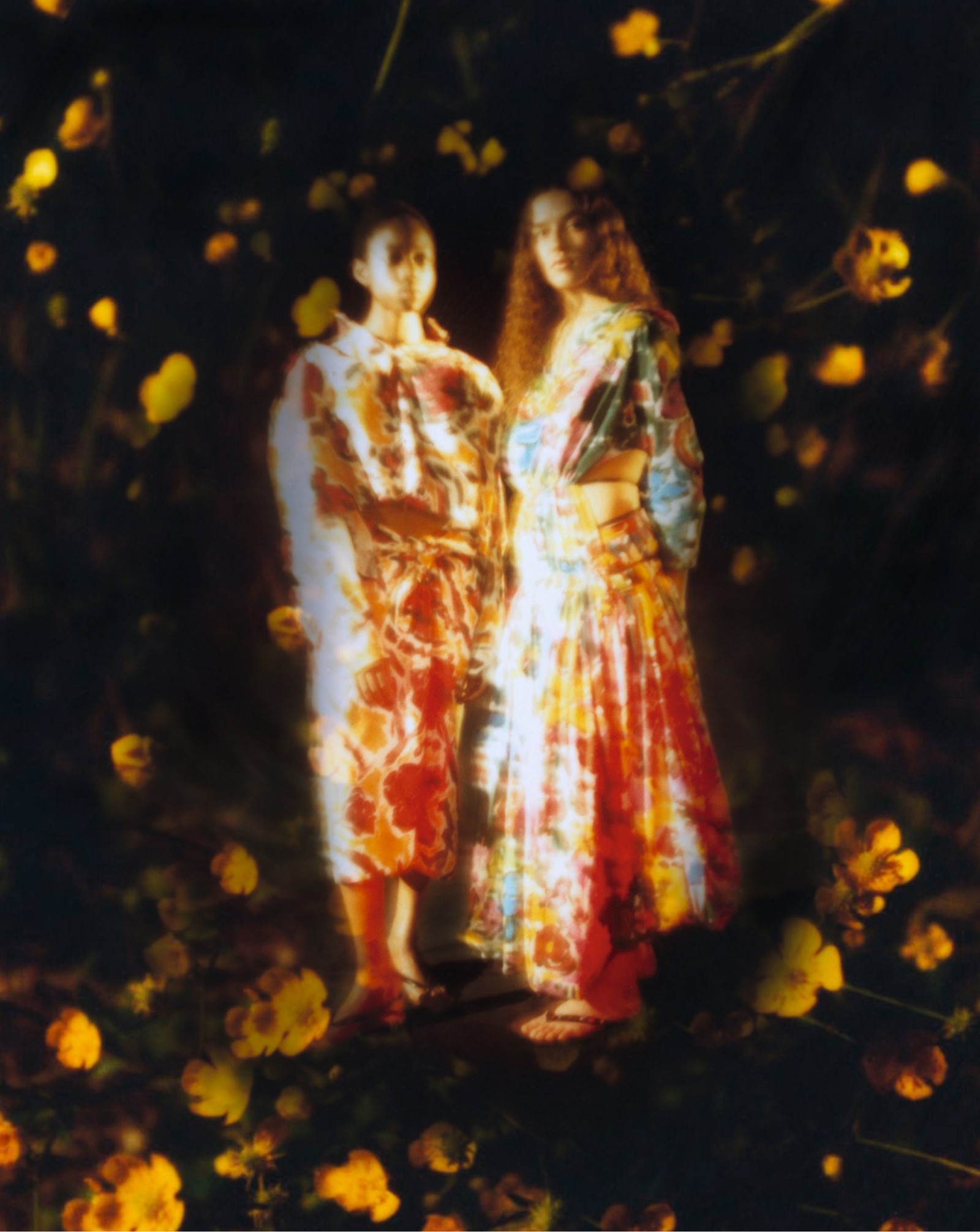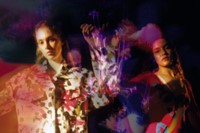Francesco Risso is tall. Very tall. His office is on the top floor of Marni’s Milanese headquarters, necessarily high-ceilinged, and painted with broad vertical stripes to accentuate height – the room’s and his own. He wears trousers that narrow at the hips, puddling at the hem; a knitted skullcap minimises the head. Behind him, a long, thin door opens and a long, thin dog – George, Risso’s weimaraner, who’s waist-height on me – bounds out, augmenting the tall tale.
Risso’s office is a bit of a creative mess – “a designed chaos!” he says, laughing. The space is papered with dozens of plastered-together photocopies, the inspirations for his forthcoming collections. Note the plural: he creates six a year at Marni, so works concurrently on multiples. “I have an honest attraction to images,” he says. “At the beginning of the process, it is about images – a lot of images. It’s like building up a puzzle, where the picture doesn’t have a value but the combination does, and the story.” It is also stacked with hundreds of books, and cluttered with strange tchotchkes, largely obscured by the chiaroscuro of a rain lashed early evening in late December. I make out a life-size statuette of a British bulldog in one corner that seems to be made from papier mâché. It’s painted in saturated, psychedelic hues.
Psychedelic is a term many people use to describe what Risso has been doing at Marni since he joined the label as creative director in 2016, maybe because, compared to what Marni was, Risso is taking us on a wild trip. Known for geometric jewellery and heavy shoes, exuberant print and fabric development, which added up to a cuddly, dependable breed of what the Italians term eccentrico – “Quite naive, hippie, joyful,” in Risso’s words – Marni appealed, by and large, to a committed cadre of loyalists after it was established in 1994 by Consuelo Castiglioni and her husband Gianni. The latter’s family owned a fur company, and Marni began with Consuelo’s experimentations using pelts like fabric, without preciousness. The label’s gentle, generous silhouettes offered secure dressing to women of various ages, appealing especially to intellectually minded creatives – writers, architects, gallerists. Though Marni occasionally flared into fashion relevance – Risso himself loved, and loves, the label’s Autumn/Winter 2009 offering, with giant furry mittens that resembled couture oven gloves – it was mostly marching to the beat of its own drum, out of the loop. “She always wanted to be outside the typical game,” says Risso of Consuelo. “And that made Marni more special and unique. The brand has a freedom at its core.”
“[Consuelo Castiglioni] always wanted to be outside the typical game. And that made Marni more special and unique. The brand has a freedom at its core” – Francesco Risso
Those ideas – the strangeness of proportion, recontextualised materiality and creative freedom that characterises the best Marni collections past – are something Risso is fascinated by, judging by his work. Over the past four years, he has pushed Marni’s love affair with exceptional textiles to the outer limits: his first show featured wool pilled to a near-granular texture; another had coats that seemed to be made from the contents of a tumble dryer’s lint trap. They’ve even changed the way Risso himself works. “I used to draw – I love drawing – but I have no time for drawing,” he says. “It’s because I have shifted into the game of the senses, somehow. We build up a lot through shapes, materials, textiles. The drawing comes after. In the past, I have sketched books of stuff, and that would be my strength, illustrating what was in the mind. But now the perception, the feel, the hand. It has become the humanity of it. The sketch can’t help you.” Unconventional fabrics, fashioned into unconventional clothes, have garnered unconventional fans, drawn to Risso’s Marni because it proposes something that feels brave, different.
Perhaps in reference to the psychedelia synonyms tossed around about his work, Risso titled his Spring/Summer 2020 womenswear show Tachitropirina, the name of a fictional drug he cooked up, complete with imagined, tongue-in-cheek side effects. Its adherents were wild women, bulbous and Venus-of-Willendorf-hipped, with matted hair, dressed in multi-hued paint-splattered canvas dresses and duchesse satins in pharmaceutical hues of Adderall orange, Klonopin pink and Viagra blue. His loquacious show notes warned that Tachitropirina “must be administered with caution to patients easy to psychotropic drifts, streams of consciousness and fantastic logorrhoea”. And people say fashion doesn’t have a sense of humour.
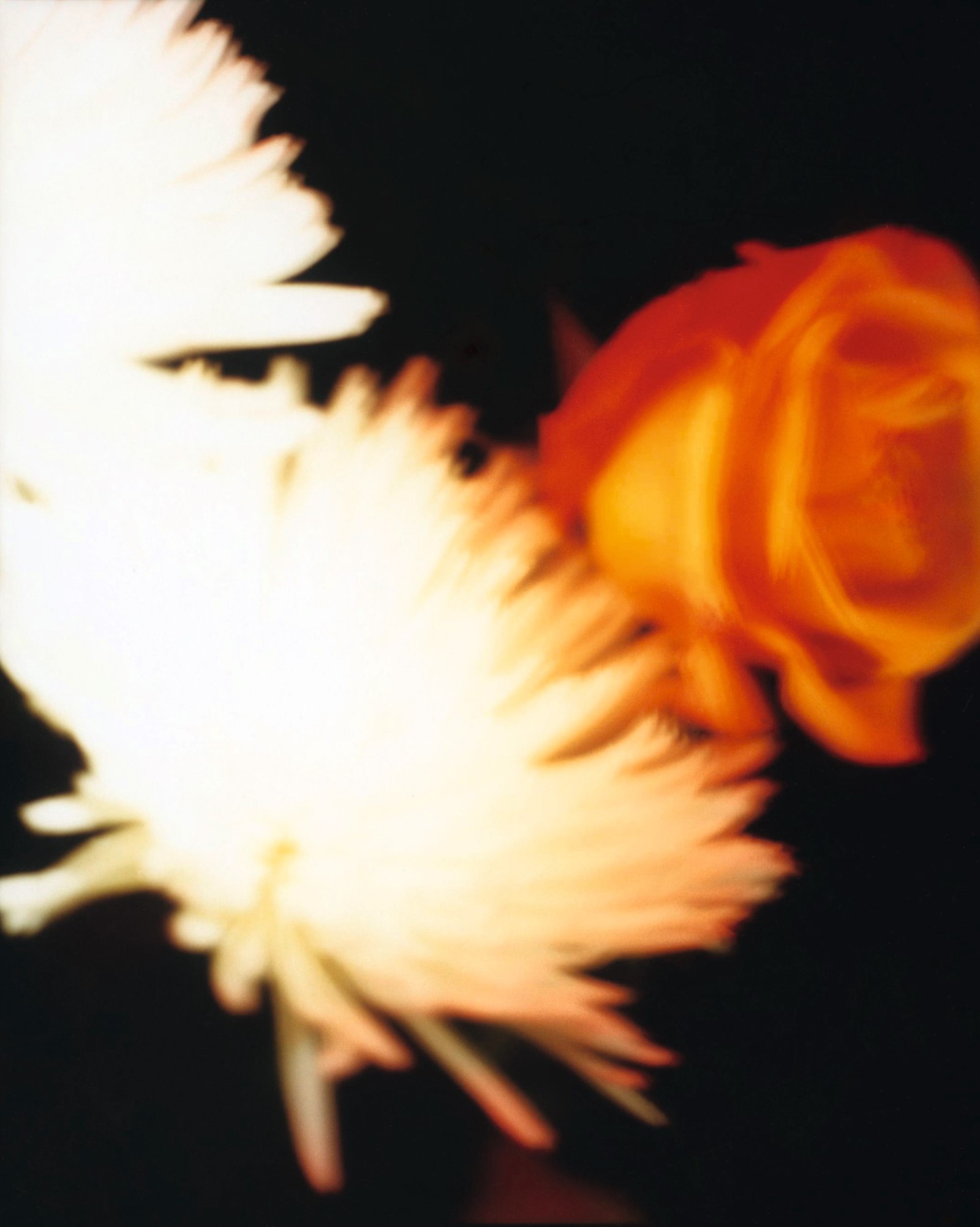
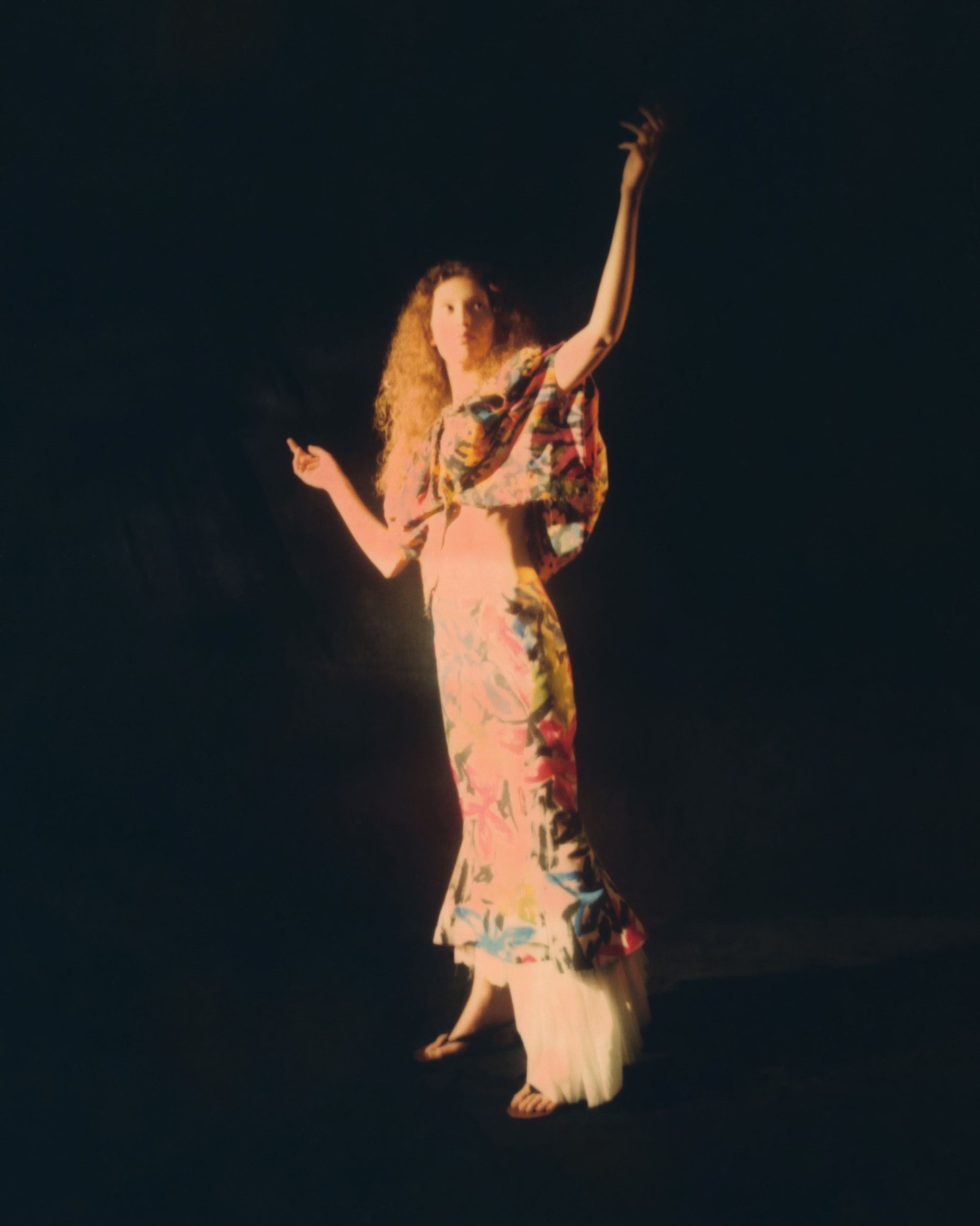
Psychotropic drift could well be a Marni collection title in itself: Risso’s shows often stimulate the senses to near-overload, all that bright bright colour and texture, alongside booming audio (last winter, Wendy Carlos’ soundtrack to The Shining and a caterwauling feline), and whatever sense is evoked by the act of sitting on discordant, improvised furniture, such as a disused television or an old mattress, to watch a fashion collection. Maybe taste? Risso has a specific, particular taste, and it’s fascinating. As is his own language, no less expressive than his sensory indulgence: seldom does a designer describe their shows as being about “hereticism” or the “marriage between Truman Capote and Ernesto ‘Che’ Guevara”, or indeed “Frankenstein bringing the Venus de Milo back to life”. It’s rare that any designer can articulate the predominantly tactile and visually creative process of fashion through words quite so coherently – rarer still that the aforementioned seems like a true expression of an aesthetic. But Risso’s collection from last spring, of chopped-up toile dresses, roughly stitched and puckered, a bit draped, largely sleeveless, seemed exactly like Mary Shelley’s anti-hero resuscitating the armless Aphrodite by Alexandros of Antioch. It made you annoyed you hadn’t been quick enough to think of the comparison first.
“And I wasn’t so communicative with words, so I was cutting up my sister’s clothes. It started like that – I was making my own things since I was really young. It was a way to express myself” – Francisco Risso
That said, Risso began making clothes precisely because he couldn’t talk, or maybe wouldn’t. He was a quiet child, in a noisy household. “Crowded,” is the word he uses. He is the youngest of five, with three half-sisters and a half-brother from his parents’ earlier marriages. The first four years of his life sound, to borrow a Marni moniker, a bit eccentrico. His parents had been living on a boat for a year before he was born, which happened to be moored in Sardinia in 1982, meaning Risso could be born in a hospital there. After spending five years sailing, they moved to dry land – the Italian port city of Genoa – Risso shifting from relative splendid isolation to become part of an extended yet physically close family. His maternal grandmother and paternal grandparents lived with them, as well as, on occasion, family friends. “It was quite intense,” he allows. “There were a lot of characters... they’re all very loud. And I wasn’t so communicative with words, so I was cutting up my sister’s clothes. It started like that – I was making my own things since I was really young. It was a way to express myself.”
Risso’s work still has that sense of imperfection and accident, the beauty of the mistake, a love of the messy. He encourages his team to chop and change pieces, and has used hand-painted textiles in a number of collections, including the latest. “The process of making was always part of the attraction, the love,” he says. “My grandmother – my dad’s mother – was quite eclectic and would make her own clothes, so I had references there.” His maternal grandmother was also a Genoese tailor of renown, although she died before Risso figured fashion as a passion. “It came very naturally, fashion. I didn’t struggle to realise it,” he says. “I also wanted to be a movie director, a veterinarian.” Incidentally, one of his sisters is the latter. “Those were the three things... but I knew what I had to do.”

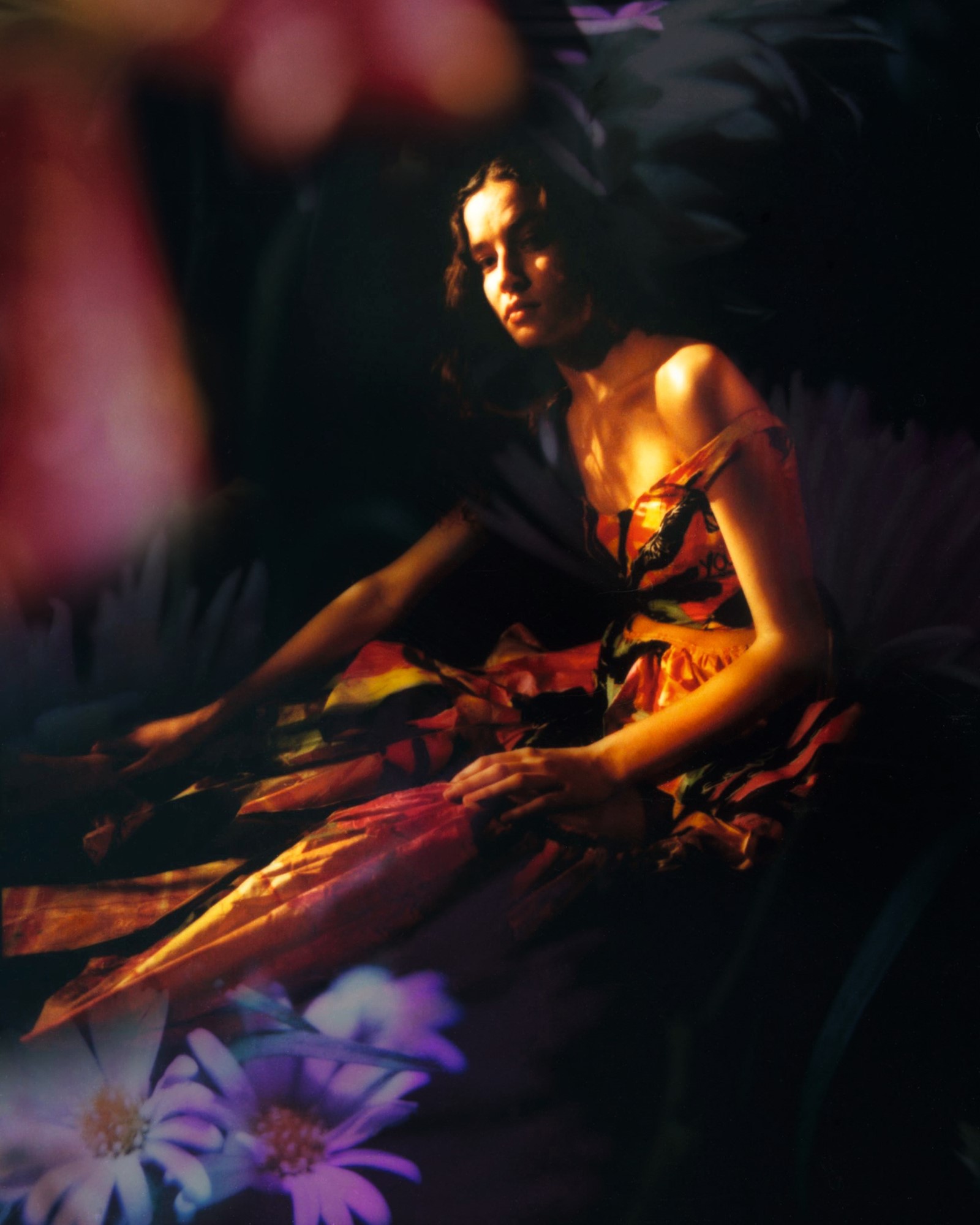
Accordingly, although Risso started by studying classics – “I loved Latin and Greek, but I needed to draw” – he moved to fashion school when he was 17, and studied, consecutively, in Florence, New York and London, at a storied trio of schools: Polimoda, the Fashion Institute of Technology (FIT) and Central Saint Martins. Each taught him something distinct and different. “I had the chance to see, to live, to learn through different methods. Florence was a very technical school, orientated around knitwear. Then I wanted a different experience, to go to New York, have something that wasn’t necessarily so Italian. FIT was extremely tough in terms of technicality, patternmaking. And Saint Martins, the opposite. All about creativity. I guess the three things, together, made a good recipe.” That recipe is between freewheeling creativity and rigour. “I can’t really go back to those moments and take those strategies, because so much time has passed. But in a way it trained you, prepared you to always look for inspiration – to be ready when you have to go to work and use it.”
“And then... Prada arrived. Ten years. It was the school of life” – Francesco Rizzo
Afterwards, Risso returned to Italy, to work with Blumarine, then Alessandro Dell’Acqua – “We were young, we would make the clothes in the office, dye the clothes in the bathtub!” He pauses. “And then... Prada arrived. Ten years. It was the school of life.” Risso was brought in to oversee the knitwear, but his role quickly expanded. “What I loved about Prada was the continuous, radical changes that would happen, from minute to minute. Not in terms of Prada – the DNA – but the strategies, the creative way of thinking, the methodologies. It was intense but beautiful. She was definitely another door, for the mind. I always like to say she taught me how to surf brains.” He smiles. “It was like entering a new learning process, skill, path. A lot of talking, contemplating things, rationalising things. It’s not just random talks, but quite organic.”
“After ten years, that world becomes your world,” Risso says of Prada. So, when the call came for him to take over Marni (the Castiglionis sold the totality of the label to Renzo Rosso’s Only the Brave group in November 2015, departing the following year), Risso was intrigued, curious about other places and processes. “I was a fan, of course,” he allows, of Marni. “I would say the part that really fascinates me is this free will, this way of making things. I think it was like that before, almost an ordered chaos. I quite liked that about Marni, that sense of freedom in the design, in thought, the anti-stereotypes, the spaces, the shops, which are almost like being in a spaceship, in the centre of Milan.” And everywhere else: Marni shops over the world follow that spaced-out design concept, consistently utilising metals and plastics and oddly coloured carpets, yet still permitting each to be individual. They eschew the conventional fashion diktat of a network of uniform retail environments to unite different locales. “But they’re also very spontaneous, very raw. I guess I was always in love with that side of Marni.”
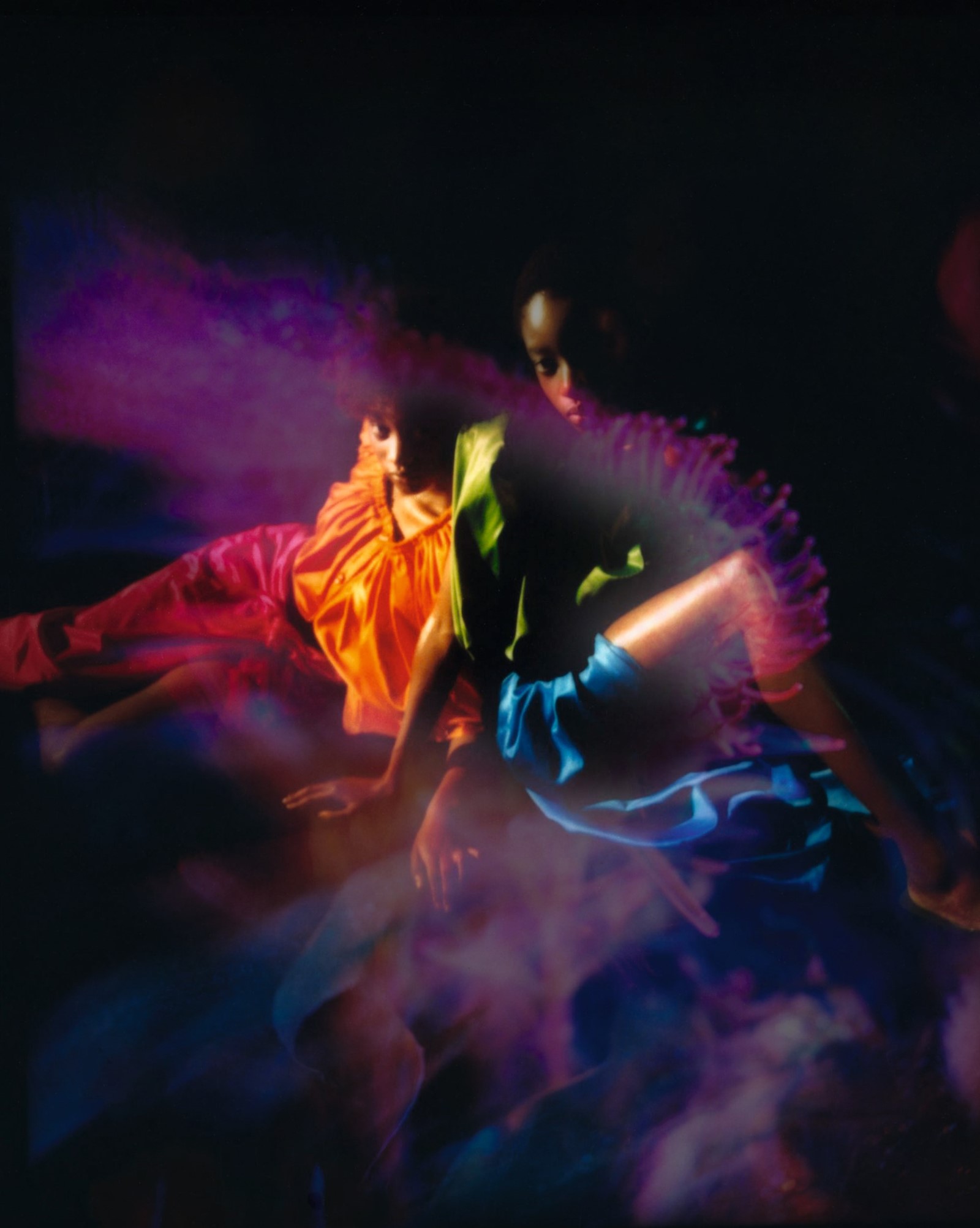
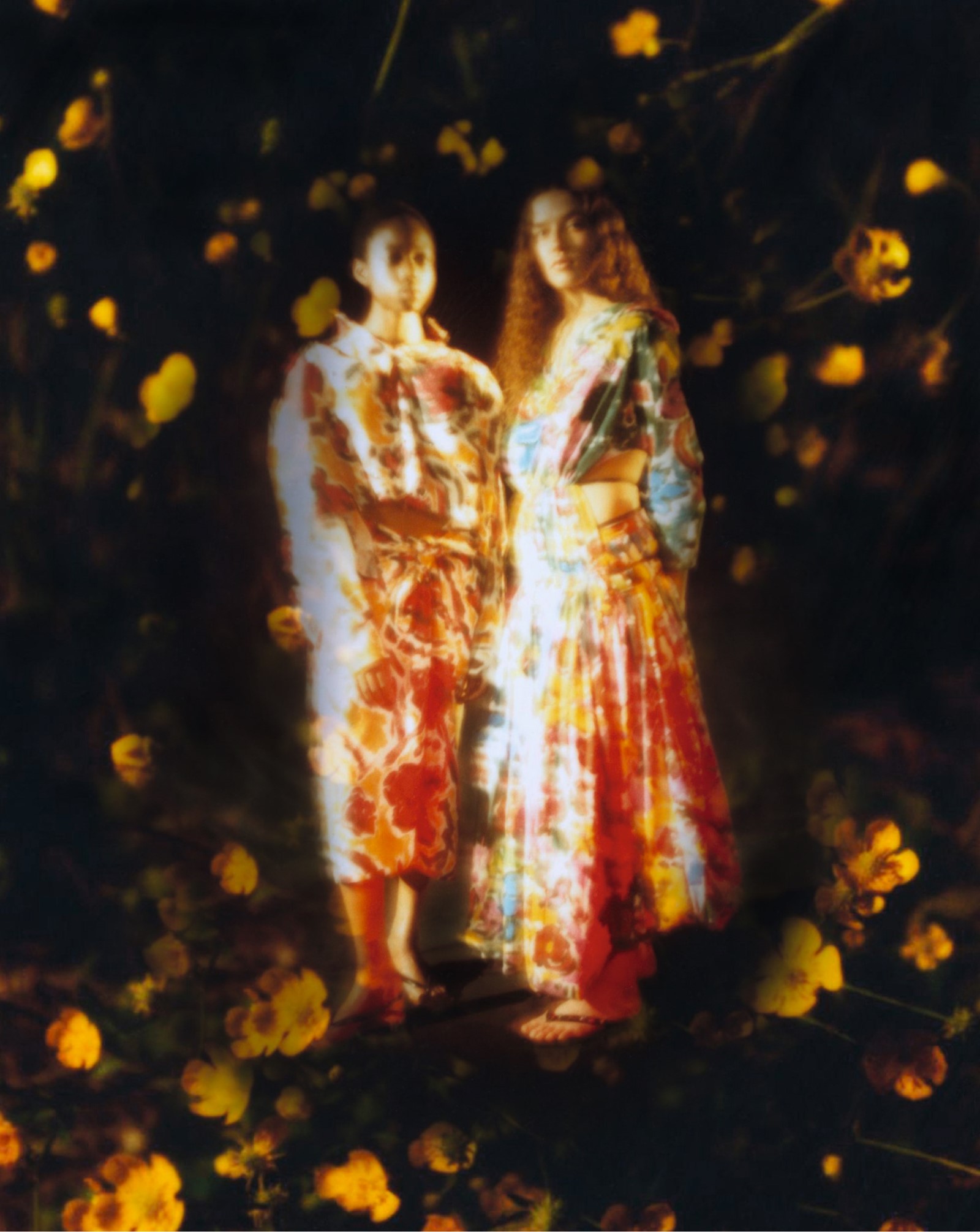
Multiplicity, multi-dimensionality, is an interesting idea, and it’s something Risso seems fascinated by. “We can’t point to a type of woman, we can’t define one unique code,” he says. “What is interesting – and what I love – is the freedom of interpretation. Interpret your own story.” For the Autumn/Winter 2019 season Risso invited the photographer Christopher Smith, a young South African who specialises in painstakingly precise self-portraits that recreate archetypal characters, to shoot himself in the Marni womenswear collection: in three images, he appeared as an Otto Dix-ian Pierrot, a blown-out power woman circa 1982 Vogue Italia, and an androgynous punk. There is something of that to Risso’s work, veering from ideal to ideal between seasons – very much in the Prada vein. Or, more generally, it’s in the vein of fashion as a vehicle of perpetual change and renewal, a source of newness in contrast to that which immediately preceded it. Risso’s oscillation between ideals, the plurality of his vision, has thrust Marni to the forefront of a fashion conversation in a way it has never been before. Of course, that’s a conversation Prada is a central player in – yet, bar a shared underlying fixation with change, Risso has forged his own path, independent of the label’s teachings. “It’s a completely different way of working,” Risso says of Marni versus Prada. “Besides, you have to be true to yourself, and dive into your own world and mind. There are moments when you have to rebel.”
“I quite like to destroy and rebuild. I guess it’s a way to detach from things and to look at it from a new perspective every time” – Francesco Risso
Risso’s rebellion isn’t so much against the teachings of Prada – he is veritably reverent when discussing both Miuccia Prada and her husband and joint CEO, Patrizio Bertelli. It’s wider, actually. He’s rebelling against the idea of gendered clothes, for sure, although he insists that isn’t conscious. “Now the interesting thing is that women are buying men’s, men are buying women’s. It was quite a nice surprise. A good mistake,” he says. He’s also rebelling against industrialisation, exalting craft (his term) and the power of the hand. And he’s definitely challenging the idea of what Marni was, and should be. “I quite like to destroy and rebuild,” he says. “I guess it’s a way to detach from things and to look at it from a new perspective every time.”
That said, the perspectives were shared this past season: Risso’s spring menswear, shown in June, and that psychotropic, trippy September womenswear collection, were dubbed Act I and Act II respectively. They were riffs on the same theme – or maybe proselytisations of the same cause. At his standing-room-only menswear show, light was filtered through a bunch of screwed-up and squashed plastic bottles, collected by the Marni team from Milanese roadsides, suspended above the audience’s heads like detritus floating on the surface of the sea. In case you didn’t get the symbolism, backstage Risso dubbed it the plastic of Damocles. It wasn’t just for show at the show: the plastic collected was then recycled by the Berlin-based artist Judith Hopf, crafted into a tropical jungle of spiky, synthetic and somewhat savage foliage, inspired by Jean Dubuffet, David Hockney and the Fauves, and used as the decor for the subsequent womenswear show. “We have been doing projects where we recuperate things – we have done it for the shows, with the clothes,” says Risso, thoughtfully. “Somehow, I needed to do something that would be more organic for the company, as a sign. To say, from now on this will be how we work, how we try to do things.”
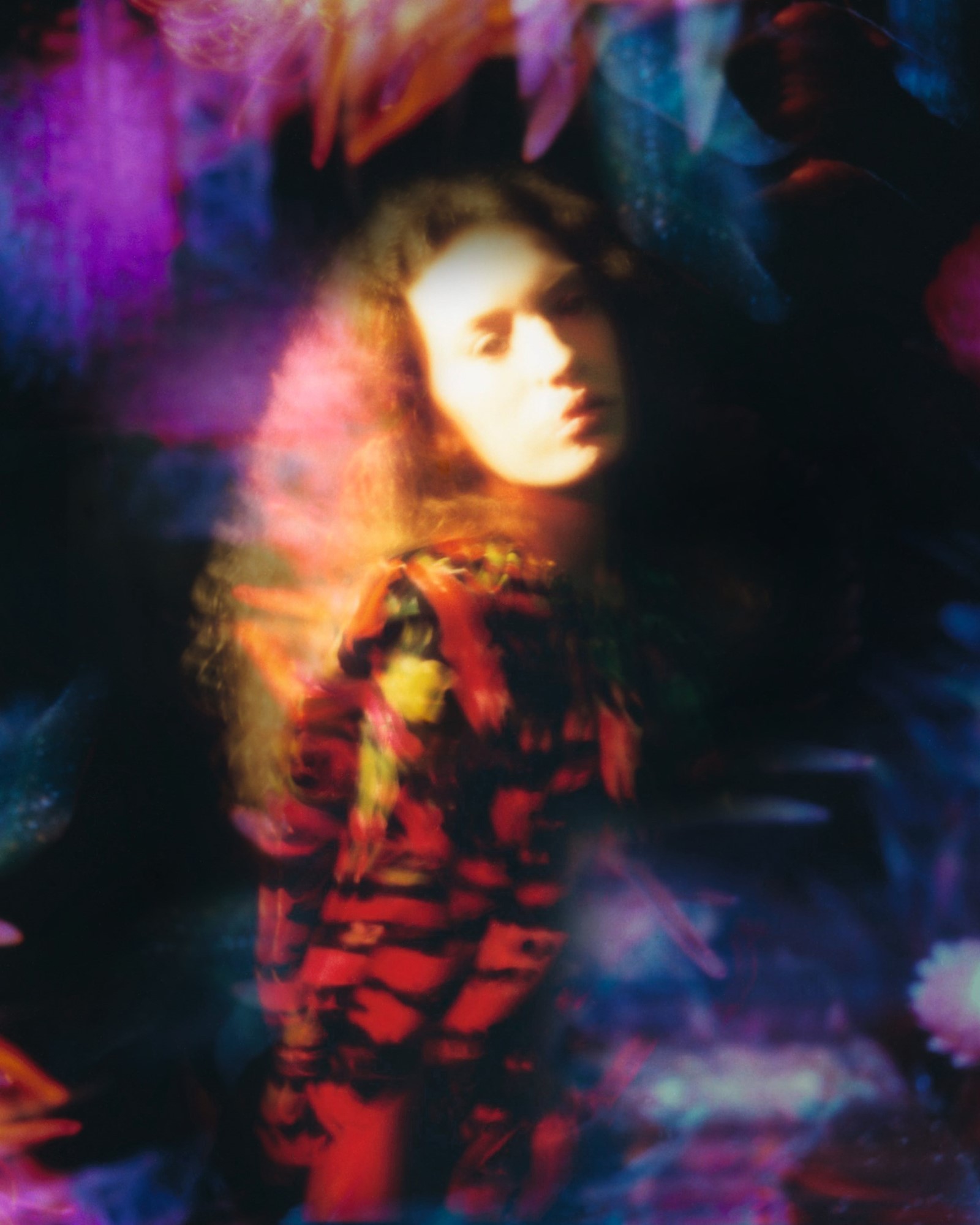
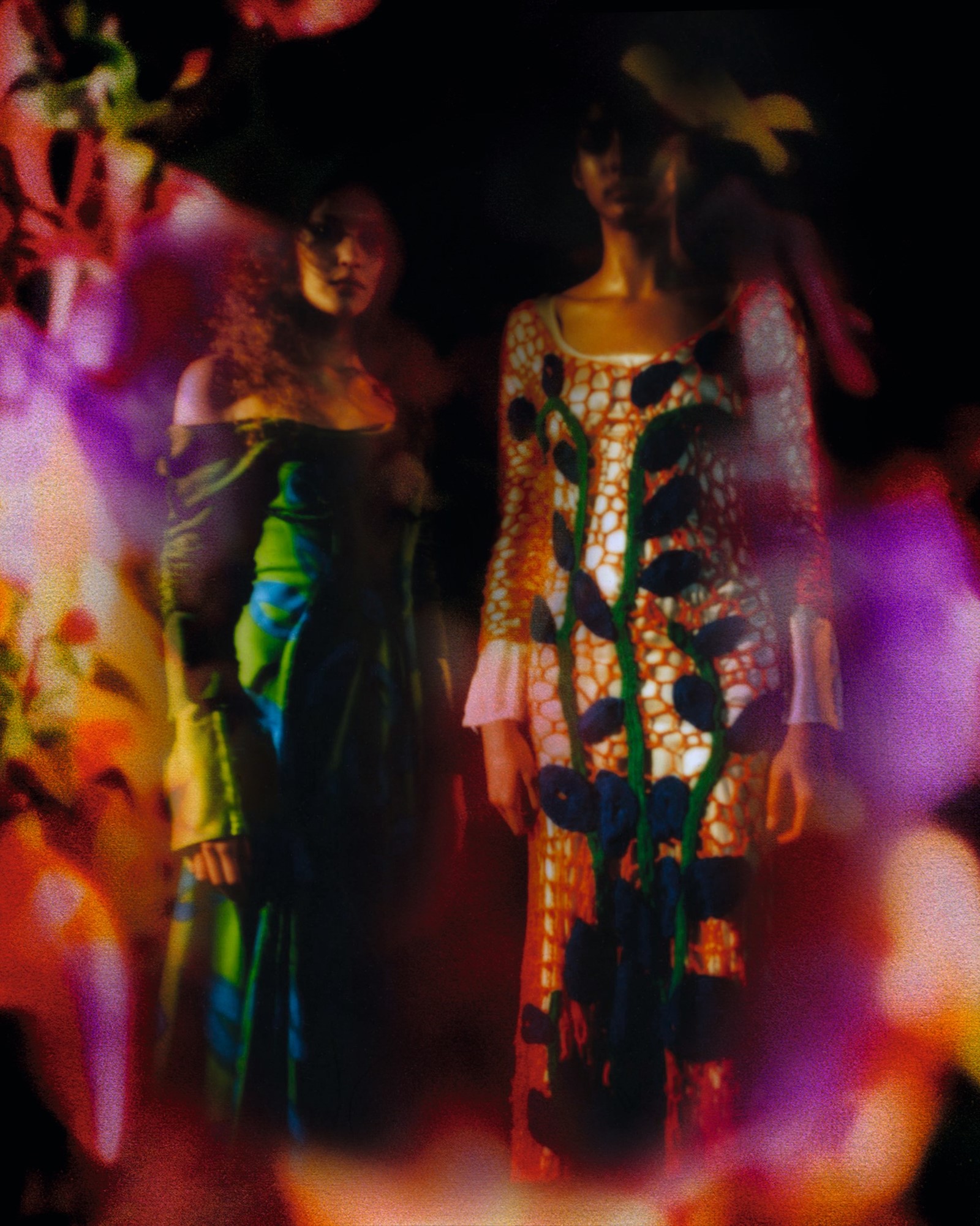
If Marni prior to Risso was a little out on its own – a lone ship, splendidly isolated – the designer has brought it into port. It now feels inherently connected to ideas and issues occupying culture, society, specifically a new generation, a new future. That crosses from fashion into the realms of politics and ecology. “It all started from Brazil, from friends of mine, their characters in this particular moment. They have an awful president,” – Jair Bolsonaro, a right-wing reactionary whose term began on 1 January 2019 amid a storm of controversy around his racist, sexist and homophobic comments, and his defence of everything from military dictatorship to torture – “then, the Amazon burned before the show. And six months before I had been talking with friends who live in the Amazon, who go to the Amazon. It came from that beauty, that energy, that fight that they have.” Hence the fact his Marni women looked like warriors, eco and otherwise. It’s notable, too, that Risso didn’t talk about most of this backstage, in what he calls the “blah, blah, blah” of explaining the collection – although he does that very well indeed. Perhaps because this is deeper and more personal. “The last show was very dear to me, my life, the experiences I had,” Risso said.
Mention sustainability, though, and Risso’s nose wrinkles. “That word... It’s an impossible word.” He exhales. He prefers consciousness, which feels more enigmatic, less clichéd. “For a company that has always worked with certain methods or in certain ways, sometimes a change to consciousness can be scary. At the end and of the day you have to sustain the people who are working here. That was a way to have fun with it, and to inject a new cycle. Now, it’s becoming part of our life. To come up with ideas, things that we can solve, can change. Commercial and creative processes.” Risso pauses. “It’s our life, and we want to do something about it.” It’s not just about saving the world but savouring it, too.
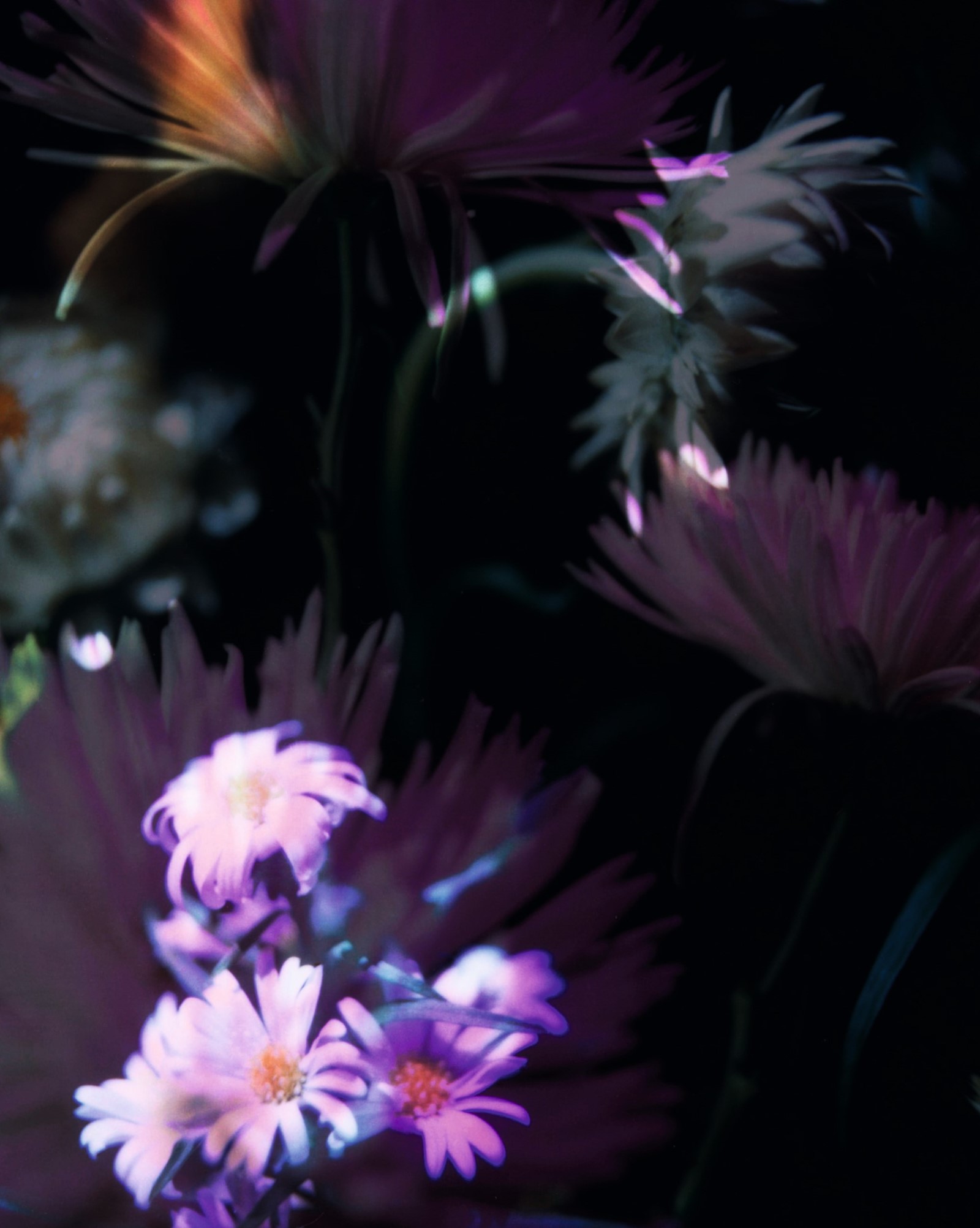
Hair: Akki Shirakawa at Art Partner using Oribe. Make-up: Mathias Van Hooff at Management Artists using MAC. Models: Isabella Banjoko and Zoe Kezia at Models 1, Lauren Case at IMG, Precious Craig and Charlie Rump at Storm and Connie Savill at Viva London. Casting: Midland Agency. Set design: Derek Hardie Martin at The Wall Group. Photographic assistants: Ollie Radford and Takeru Brady. Styling assistant: Rebecca Perlmutar. Hair assistants: Rei Kawauchi and Emilie Bromley. Make-up assistant: Shiori Kawato. Set-design assistant: Sam Scott. Printing: Labyrinth. Post-production: Sorika
This story originally featured in AnOther Magazine Spring/Summer 2020, which is on sale internationally now.
